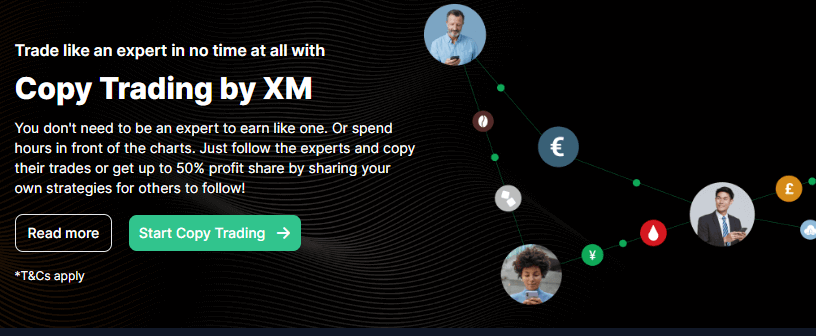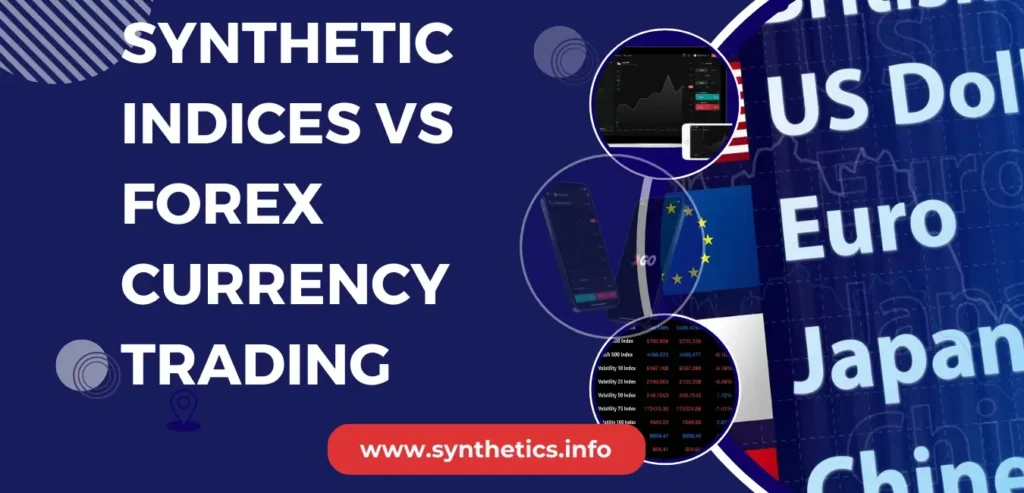Back in 2014, I started trading forex and binary options, and the inability to trade over the weekend drove me nuts—I had to sit on the sidelines until Monday. There simply weren’t alternatives, so I just had to live with the downtime.
Then in 2016, synthetic indices hit the scene and offered true 24/7 trading. I was hooked from day one. After nearly a decade trading synthetics, I’m constantly fielding questions from new traders about how synthetic indices vs forex differ.
In this post, I’m breaking it all down so you’ll see exactly where they overlap—and where they don’t.
Let’s start by defining each instrument type.
What Are Forex Pairs?
Forex pairs consist of two currencies traded against one another. For example, EUR/USD represents how many U.S. dollars it takes to buy one euro.
Prices move based on real-world forces—economic data, central-bank decisions, geopolitical events, and institutional order flow. If the U.S. releases unexpectedly strong GDP numbers, EUR/USD will react; if a surprise rate cut hits, USD/JPY might spike.
In short, when you trade forex, you’re speculating on one country’s currency rising or falling relative to another.
📗Are you a complete newbie in forex trading? Then check out this guide that breaks it all in simple terms
What Are Synthetic Indices?
Synthetic indices are algorithmically generated price streams designed to mimic market behavior without relying on real-world fundamentals.
Platforms like Deriv create these indices (e.g., Volatility 75, Boom 1000, Jump indices) using a deterministic random number generator, so volatility follows a fixed pattern regardless of economic calendars.
There’s no news that gaps prices overnight—just a 24/7 algorithm you can backtest perfectly.
Traders use technical rules (e.g., candlestick patterns) to scalp or swing these indices, confident that the rules driving price movements never change.
📘 Brand-new to synthetic indices? Here’s my ultimate beginner-friendly guide that explains it all clearly:
 Read Review
OPEN AN ACCOUNT
Read Review
OPEN AN ACCOUNT
Min Deposit: USD 1
Total Pairs: 100+
Regulators: MFSA, LFSA, VFSC, BVIFSC
🔍 Differences Between Synthetic Indices and Forex (Updated 2025)
🚒 1. Cause of Price Movement & Influence of Fundamentals
In forex trading, price movement is directly driven by real-world events. Currency pairs like EUR/USD or USD/JPY respond to economic data releases, central bank interest rate decisions, inflation reports, wars, and political headlines.
I’ve seen this play out countless times. When tensions escalated in Ukraine, the Ruble collapsed almost overnight. In 2018, the Turkish lira crashed after a diplomatic fallout — traders caught on the wrong side of the move were hit with heavy slippage and blown stop-losses.
If you’re not paying attention to the economic calendar, forex can punish you fast.
Synthetic indices, by contrast, are immune to all of that.
They run on a deterministic algorithm—there are no fundamentals, no central banks, and no external events that can shake the market.
The price action follows a coded volatility profile that remains consistent regardless of what’s happening in the world. Whether there’s a recession, a surprise rate hike, or a pandemic announcement, synthetics keep moving smoothly.
I’ve tested scalping bots on Volatility 75 during all kinds of global chaos eg Trumps tariff war, and the market behavior never skipped a beat. That level of consistency is gold for traders who want a fully technical, backtestable environment without the noise of fundamentals.

⌚2. Trading Hours & Availability
Synthetic Indices:
Synthetic indices are available 24/7/365 — no breaks, no excuses, no holidays.
You can trade Christmas morning, Sunday night, or Tuesday at 3 AM—and you’ll always find consistent volatility.
This flexibility is one of the main reasons African traders, including myself, love synthetics. You can hustle after work, during lunch breaks, or even late nights without worrying about missing peak hours.
Forex Pairs
Forex trading is only available from Monday 12 AM to Friday 10 PM (GMT).
It is closed on weekends, meaning zero action from Friday night until Monday morning. On top of that, the market closes during major global holidays (e.g., Christmas, New Year).
Peak activity typically during London and New York overlaps. If your trading hours don’t align with these, you’ll often be stuck trading slow, lifeless markets.
This time of availability is one of the major differences between synthetic indices vs forex.
💹3. Underlying Assets & Pairs
A major difference between synthetic indices and forex lies in how the instruments are structured. Forex always trades in currency pairs — you’re buying one currency and selling another.
Think EUR/USD, GBP/JPY, USD/ZAR — it’s always a pair, and your job is to anticipate how their value will shift relative to one another.
Synthetic indices, however, are standalone instruments — you’re trading a single market like Volatility 75, Boom 1000, or Step Index.
The term “synthetic pairs” sometimes gets thrown around by mistake, but there is no such thing — you aren’t trading synthetic indices against one another or pairing them like forex.
Each synthetic index is its own market with its own price behavior.

🚄 4. Volatility Patterns
Volatility is another key area where these two markets differ.
Forex volatility is event-driven — big moves typically happen around news releases or during periods of geopolitical uncertainty. The rest of the time, the markets can drift sideways, especially during less liquid sessions.
Synthetic indices, on the other hand, have algorithmically consistent volatility built in.
Whether you’re trading Volatility 75 or Boom 1000, the price movements follow a predictable volatility profile that holds up around the clock.
This makes backtesting much more reliable and allows traders to develop highly repeatable scalping or swing strategies that won’t be thrown off by unexpected news events.
📈 5. Platform & Broker Availability
One key difference between forex and synthetic indices is where and how you can trade them. Forex is available on almost every major trading platform — MT4, MT5, cTrader, and many others — and through a wide range of brokers.
Whether you prefer Deriv, HFM, XM, Exness, or another broker, you’ll have no shortage of options for trading forex pairs.
Synthetic indices are a different story.
They’re primarily available on Deriv’s own platforms — including Deriv MT5, Deriv X, Deriv cTrader, and the Deriv web-based SmartTrader and DTrader platforms.
You can read the full breakdown of these platforms here:
📲 Platforms for Trading Synthetic Indices on Deriv →.
It’s worth noting that all of these except MT5 are Deriv’s proprietary platforms, meaning they only work within the Deriv ecosystem.
For now, Deriv is still practically the only well-established broker offering synthetic indices at scale.
However, one other name has recently entered the space — Weltrade, a broker with over 10 years in the industry, has started offering its own version of synthetic indices designed to mimic the movement of Deriv’s synthetics.

Whether Weltrade will succeed where others have failed remains to be seen; several brokers in the past have tried to offer synthetic indices but have eventually dropped them.
As it stands today, if you want deep liquidity, consistent execution, and a reliable ecosystem for synthetics, Deriv is still the primary broker that traders trust.
You can learn more about Weltrade synthetic indices here.
💰 6. Liquidity & Spreads
When it comes to spreads and liquidity, forex and synthetic indices behave very differently.
Forex markets generally offer excellent liquidity, particularly on major pairs like EUR/USD or GBP/USD. Spreads on these pairs can be extremely tight during peak sessions — sometimes less than one pip.
But spreads can also widen dramatically during news events or thin trading periods, causing slippage and higher costs.
Synthetic indices, by contrast, have fixed spreads that do not widen during off-hours or around news events (since there are none).
You always know your transaction cost going in, which makes them highly appealing to scalpers and bot traders who depend on consistent trading costs.
For someone running an algo or EA on Volatility 75, this level of cost predictability is a huge advantage.

📑 7. Market Size & Liquidity
The forex market is an absolute giant — as of 2022, it moves more than $7.5 trillion in volume every single day, making it the largest financial market in the world by far.
Thanks to this deep liquidity, you’ll rarely encounter slippage or execution problems when trading major pairs like EUR/USD or GBP/USD.
The only exceptions are when trading exotic pairs or using low-quality brokers where spreads and fills can get questionable.
Synthetic indices are a completely different animal.
The market is a closed-loop system — exact daily volume figures aren’t published because pricing and execution are controlled entirely within the Deriv ecosystem.
You’re trading against Deriv’s engine, not a decentralized global market.
That said, in my own experience trading Volatility 75, Boom & Crash, and Step Index — even when running bots at scale — I’ve never had any issues with liquidity or slippage, even on larger position sizes.
Spreads remain fixed and fills are consistent, which is one of the key reasons synthetics have become so popular with scalpers and algorithmic traders.

⚖️8. Regulation & Broker Access
Synthetic indices are primarily offered by Deriv, which holds licenses in several jurisdictions (including MFSA in Malta and VFSC in Vanuatu).
However, these licenses aren’t equivalent to top-tier regulatory bodies like the FCA or CFTC. Compared to the world’s most tightly regulated forex brokers, Deriv’s regulatory coverage is seen as a step down — something you should be aware of if you’re used to trading with Tier-1 brokers in the UK or US.
That being said, I’ve personally used Deriv since 2016 and have found them extremely reliable when it comes to withdrawals, platform stability, and overall service. Over 9+ years of trading synthetics, I haven’t had a single withdrawal issue, and the execution on their proprietary and MT5 platforms remains rock-solid.
Forex, on the other hand, is a fully global market with thousands of brokers competing for your business.
The regulatory landscape is much stronger — top brokers are licensed by authorities like the FCA (UK), ASIC (Australia), FSCA (South Africa), and others.
You’ll often get access to ECN/STP models, segregated accounts, negative balance protection, and a much higher level of transparency compared to what’s available in the synthetic space.
🔁 Similarities Between Synthetic Indices and Forex Pairs
While there are clear differences between synthetic indices vs forex pairs, the two markets also share plenty of common ground.
In fact, many traders (myself included) switch between them seamlessly because core trading skills apply across both.
Whether you’re scalping Volatility 75 or swinging GBP/JPY, you’ll find the same trading principles and tools in play. Here’s where the overlap lies:

🛃1. Trading Platforms & User Experience
Both synthetic indices and forex pairs can be traded on MetaTrader 5 — one of the most popular retail trading platforms in the world.
If you’re used to MT5, you’ll feel right at home trading synthetics. You get full access to advanced charting tools, indicators, expert advisors (EAs), and one-click trade execution on both markets.
This consistency makes it easy for forex traders to test strategies on synthetics without needing to learn a new platform or workflow.
⚖️2. Leverage & Risk Management
Both markets offer leveraged trading, which means you can amplify potential profits — but also your risks.
Whether you’re trading 1:2000 leverage on EUR/USD or 1:1000 leverage on V75, proper risk management is absolutely critical.
I use the exact same principles in both markets: tight stop-losses, appropriate position sizing based on account balance, and never risking more than I can afford to lose.
The psychology of leverage doesn’t change — discipline is required whether you’re in forex or synthetics.

📈3. Technical Analysis & Price Action
One of the biggest similarities between synthetic indices and forex pairs is that both respond extremely well to technical analysis.
I’ve used moving averages, RSI divergence, Fibonacci retracements, trendlines, and pure price action setups successfully in both markets.
In fact, many of the price action patterns I originally developed for forex (like engulfing candles, pin bars, and break/retest setups) have transferred perfectly to synthetics — with even better consistency in some cases.
If you know how to read a chart, you can trade both markets confidently.
🧠 4. Trading Psychology
At the core, trading is trading — and psychology plays the same role whether you’re trading forex or synthetics.
Fear, greed, FOMO, and overtrading can wreck your account in either market if you’re not careful. I’ve learned (sometimes the hard way) that staying emotionally neutral and sticking to a proven system matters just as much when trading Boom 1000 as it does when trading EUR/USD.
Both markets reward traders who can stay disciplined and consistent.

⚡5. Speed of Execution
Both markets now offer fast execution, especially when using quality platforms like MT5.
Whether I’m scalping forex or running a high-frequency bot on synthetics, trade entry and exit speeds are near-instant.
In my own testing, Deriv’s MT5 execution on synthetics is just as fast as top forex brokers on major pairs — so you’re not giving up anything in terms of trade responsiveness.
⬇️ 6. Automated Bots & Copy Trading
Both synthetic indices and forex give you plenty of options to automate your trading. On the forex side, you can run advanced strategies using MT4 or MT5 Expert Advisors (EAs) — there are thousands of them out there, or you can build your own.
On synthetics, you can do the same using Deriv MT5 scripts or Deriv Bots, which allow you to automate strategies on popular indices like Volatility 75 and Boom & Crash.
And if you’re not ready to go fully manual? Both markets support copy trading. You can follow and copy the trades of successful traders — whether through third-party services on forex brokers or via Deriv’s built-in copy trading platforms.
It’s a great way to start gaining experience while you learn the ropes.

🎮7. Demo Accounts Work Exactly the Same Way
Before risking real money, you can fully test your strategies in both markets.
I often stress-test new scalping systems on Volatility 25 in demo first, just like I would run a simulated news breakout strategy on EUR/USD.
Both synthetic indices and forex pairs offer free demo accounts with live price feeds, giving you a safe environment to practice, refine your approach, and build confidence without financial risk.
💶 8. Pips and Price Action Still Matter
Pips and price action are at the heart of both markets. While the actual pip value differs — a pip on GBP/USD is not the same as a point move on V75 — the concept is identical: you’re trying to capture meaningful movement.
Whether it’s 10 pips on GBP/USD or 10,000 points on Volatility 75, the goal is the same — identify good setups and execute with precision.
And the same price action principles — support/resistance, breakouts, candle patterns — apply equally to both markets.
Want to know how much each point on each Synthetic Index is worth in dollar terms?
Check out our
📊 9. Both Support CFD & Binary Options Trading
Another similarity is that both markets support CFD (Contract for Difference) trading, meaning you can speculate on price direction without owning the underlying asset.
You simply profit (or lose) based on the price move. On both forex pairs and synthetic indices, CFDs are the primary way most traders engage with the market.
In addition, both markets also offer binary options — where you bet whether the price will go up or down within a fixed time window.
This style of trading is popular among scalpers and short-term traders looking for quick, defined-outcome trades.
Whether you’re running fast binary options trades on EUR/USD or testing quick expiry setups on Volatility 75, the mechanics work the same across both markets.

🗃️ Quick Comparison Table Forex vs Synthetic Indices
| Feature | Synthetic Indices | Forex Trading |
|---|---|---|
| Market Hours | 24/7, nonstop trading | 24 hours, weekdays only |
| Asset Type | Algorithmic single indices | Real currencies in pairs |
| Volatility | Fixed, predictable | Variable, event-driven |
| Influence of News | None | Significant |
| Spreads & Costs | Fixed | Variable |
| Platforms | Deriv MT5 Only | MT4, MT5, cTrader |
| Leverage Availability | High (up to 1:1000) | High (up to 1:2000 depending on the broker) |
Which Market Should You Trade — Synthetic Indices vs Forex?
This is one of the most common questions I get, especially from new traders trying to figure out where to start. And the truth is: there’s no one-size-fits-all answer.
It really depends on your trading style, your schedule, and how your mind processes the market. I’ve traded both synthetic indices and forex since 2016 — and each has its own advantages depending on what you’re looking for.

Why Trade Synthetic Indices?
If you want pure price action without distractions, synthetic indices are hard to beat. The volatility is constant — Volatility 75 doesn’t care about economic calendars, and Boom 1000 will spike on a Sunday night just as aggressively as it will on a Wednesday afternoon.
These markets run 24/7, so if you work a day job or prefer trading at night or on weekends, synthetics give you the freedom to trade whenever it suits you.
Synthetic indices are especially attractive if you’re into scalping and short-term setups. Instruments like V100(1s) and Crash 300 move fast and clean, making them perfect for M1 and M5 chart strategies.
And since they aren’t influenced by interest rates or central bank speeches, you don’t need to worry about staying glued to the news.
It’s just you, the chart, and the algorithm — no surprise headlines to shake your setup.
Another benefit? Clarity. The synthetic market is a simplified battlefield. No GDP reports, no rate decisions — just consistent movement.
That makes it a great environment for learning technical trading, especially if you’re still getting comfortable with reading structure and spotting entry zones.
Just keep in mind: the 24/7 nature of synthetics can be a double-edged sword. The temptation to overtrade is real. You’ll need discipline to avoid burnout.

Why Trade Forex?
If you’re someone who enjoys global economics, macro themes, and reacting to real-world news — forex trading might be a better fit.
Currencies move because of real events: interest rate changes, inflation data, wars, elections, economic forecasts. If following the Fed, ECB, or central bank chatter gets your brain firing, forex gives you the perfect playground.
Another major point in forex’s favor is regulation and broker choice.
You’ll find brokers licensed under FCA (UK), ASIC (Australia), FSCA (South Africa) and more — with strong client protection measures like segregated accounts, negative balance protection, and ECN/STP execution models.
If you care about transparency and legal safeguards, this is where forex wins hands down.
That said, forex markets don’t move all the time. Mondays can be dull, and volume often fades out by Friday afternoon.
But during key news events — NFP, interest rate decisions, CPI reports — the market explodes with opportunity. And you’ll need to be sharp, because slippage, gaps, and volatility spikes are part of the game.
Forex also has rhythm. It follows global trading sessions — Tokyo, London, New York — giving the market a structure you can learn and plan around.
If you like routine and want to know when to trade and when to chill, the session-based cycle of forex is a great fit.
Lastly, forex rewards traders who can blend technicals with fundamentals. If you’re good at reading the chart but also understand how inflation data or a central bank statement can shift sentiment, you’ll have a serious edge in this space.

What Are Synthetics in Forex?
This is a question that trips up many new traders — so let’s clear it up: synthetic indices aren’t part of traditional forex. They aren’t real currencies and they’re not traded on the global interbank market.
But depending on where you’re trading and who you ask, the term “synthetics” can mean different things. Here’s what traders might be referring to:
First, when most traders on Deriv talk about “synthetics,” they’re referring to synthetic indices. These are algorithm-driven markets created by Deriv, designed to mimic natural market movement without being tied to any real-world asset — no USD, no gold, no oil.
The volatility is engineered. Examples include the Volatility 75 Index (V75), Boom & Crash Indices, Step Index, and Range Break 100.
These markets trade 24/7, aren’t influenced by news, and follow consistent mathematical patterns — which makes them perfect for technical traders and scalpers. If you’re on Deriv, this is the most common meaning of synthetics.

What are Synthetic Pairs in Forex?
In more traditional forex circles, the term synthetic can also refer to synthetic currency pairs — positions created manually by combining two or more forex pairs to mimic a third.
This technique is mostly used by institutional traders for hedging or when a certain currency pair isn’t directly available. For example, if you want to trade EUR/JPY but the pair is too illiquid or not offered, you can combine trades in EUR/USD and USD/JPY.
The USD exposure cancels out, leaving you with synthetic exposure to EUR/JPY. It works, but it’s complex — and generally not something retail traders do unless they know how to manage the exposures carefully.
There are also currency indexes, which sometimes get lumped into this conversation. The most famous is the US Dollar Index (DXY) — which tracks the USD against a basket of major currencies (EUR, JPY, GBP, CAD, SEK, CHF).
It’s not a tradable currency pair but serves as a powerful tool for gauging USD strength in the forex market.

Finally, you’ll find some brokers offering synthetic ETFs and derivatives — financial instruments designed to mimic the behavior of a basket of currencies, stocks, or commodities.
These are engineered for exposure, not real ownership. When you trade them, you’re speculating on the movement of the basket as a whole — not buying the underlying assets themselves.
Here’s what you need to remember: on Deriv, “synthetics” almost always means their exclusive volatility-based synthetic indices — V75, Boom, Crash, and so on. In traditional forex, synthetics typically refer to engineered pair combinations or index products — more useful for strategy building than day-to-day retail trading.
🔗 Related Guides
📘 Best Time to Trade Synthetic Indices on Deriv →
Discover the most active and profitable times to trade popular synthetic indices — and when to avoid dead markets.
https://synthetics.info/best-time-to-trade-synthetic-indices-on-deriv/
📘 Best Synthetic Indices for Beginners on Deriv →
Not all synthetic indices are beginner-friendly. This guide shows which ones are the best starting points if you’re new to trading synthetics.
https://synthetics.info/best-synthetic-indices-for-beginners-on-deriv/
📘 Least Volatile Synthetic Indices on Deriv →
Prefer smoother, slower markets? Here’s a list of the least volatile synthetic indices — ideal for beginners or traders looking for calmer setups.
https://synthetics.info/least-volatile-synthetic-indices-on-deriv/
📘 Tips for Trading Synthetic Indices →
Real-world tips for trading synthetic indices successfully — covering risk management, strategy tweaks, and common mistakes to avoid.
https://synthetics.info/tips-for-trading-synthetic-indices/
Final Thoughts from Jafar on Forex vs Synthetic Indices
Here’s the truth I’ve learned after years of flipping between the two:
Trade where your mind feels most in control.
If you find yourself getting anxious over news headlines or confused by global economic shifts, start with synthetics. You’ll have one less variable to worry about. But if you thrive on macro trends and enjoy decoding how the world affects markets, forex offers more depth and realism.
Personally? I do both.
Synthetics for speed. Forex for structure.
Some days I’m flipping M1 setups on V75, other days I’m holding a clean EUR/USD swing trade into FOMC week. The markets aren’t in competition — they’re tools. Pick the one that works for your personality and your goals. Or, like me, learn to navigate both.
Now it’s your turn — are you trading synthetic indices, forex, or both? Drop a comment below and share your experience!

FAQ’s on Forex vs Synthetic Indices
No. Synthetic indices are not part of the traditional forex market. They are not currency pairs, and they are not traded on the global interbank system. However, you will often see traders using the term synthetic indices forex — usually referring to the fact that you can trade both markets side by side on Deriv MT5, and that many of the same technical strategies (like price action and trend trading) work across both markets.
No. Synthetic pairs (in forex terminology) refer to creating a combined exposure across two or more trades to mimic another currency pair. Synthetic indices, by contrast, are standalone algorithmic markets like V75 or Boom 1000 — they are not currency pairs and cannot be combined in the same way as forex positions.
It depends on your style. Synthetic indices offer 24/7 trading and consistent volatility — great for scalping and technical strategies. Forex suits traders who follow global news and prefer trading real currencies within a structured, regulated market. Many traders use both.
Neither market is “better” — it depends on what you want. Synthetic indices offer 24/7 trading with no news impact, ideal for consistent scalping and price action. Forex offers deep liquidity and reacts to global events, perfect if you enjoy trading fundamentals and real-world currencies. Many traders combine both.
It depends on your goals. Forex is great if you like trading global news and real currencies with strong regulation. Synthetic indices offer clean, news-free price action and 24/7 availability — ideal for technical traders and weekend scalping. Many traders use both to balance their strategies.





Other Posts You May Be Interested In
How To Deposit Into Deriv Account 💳: (Step By Step Guide 2025)
Depositing into a Deriv account is easy because Deriv accepts a wide variety of deposit [...]
Deriv Over 2 Bot (Axon) – Safer Strategy Using Digit Over Logic🤖
If you’ve been looking for a safer way to trade on Deriv, Axon might just [...]
⏱️ When to Trade Each Volatility Index on Deriv — Data-Driven Session Map
Yes, Volatility Indices on Deriv trade 24/7, but they don’t behave the same all the [...]
How To Withdraw From Deriv Account 💰 (Complete 2025 Guide)
Withdrawing from Deriv is a simple process, but it can be tricky if you are [...]
Kiro: Free Binary Options Bot for Deriv Using Over 4 Strategy (2025)
If you’re searching for a Deriv over 4 bot to run on, Kiro is a [...]
XM Account Types Review (2024) ☑ Choose The Right One ⚡
In this comprehensive review, we look at the different XM account types, to show you [...]